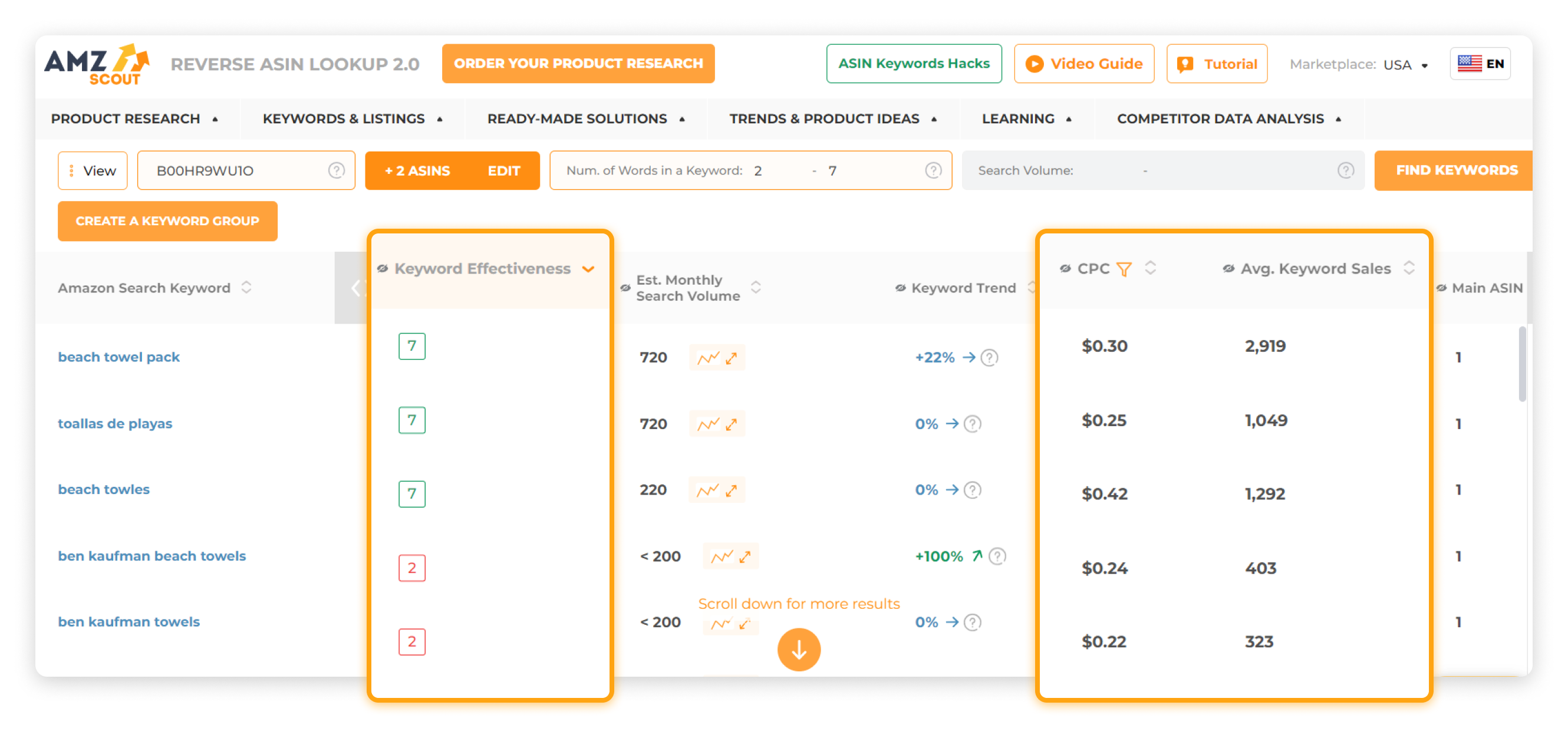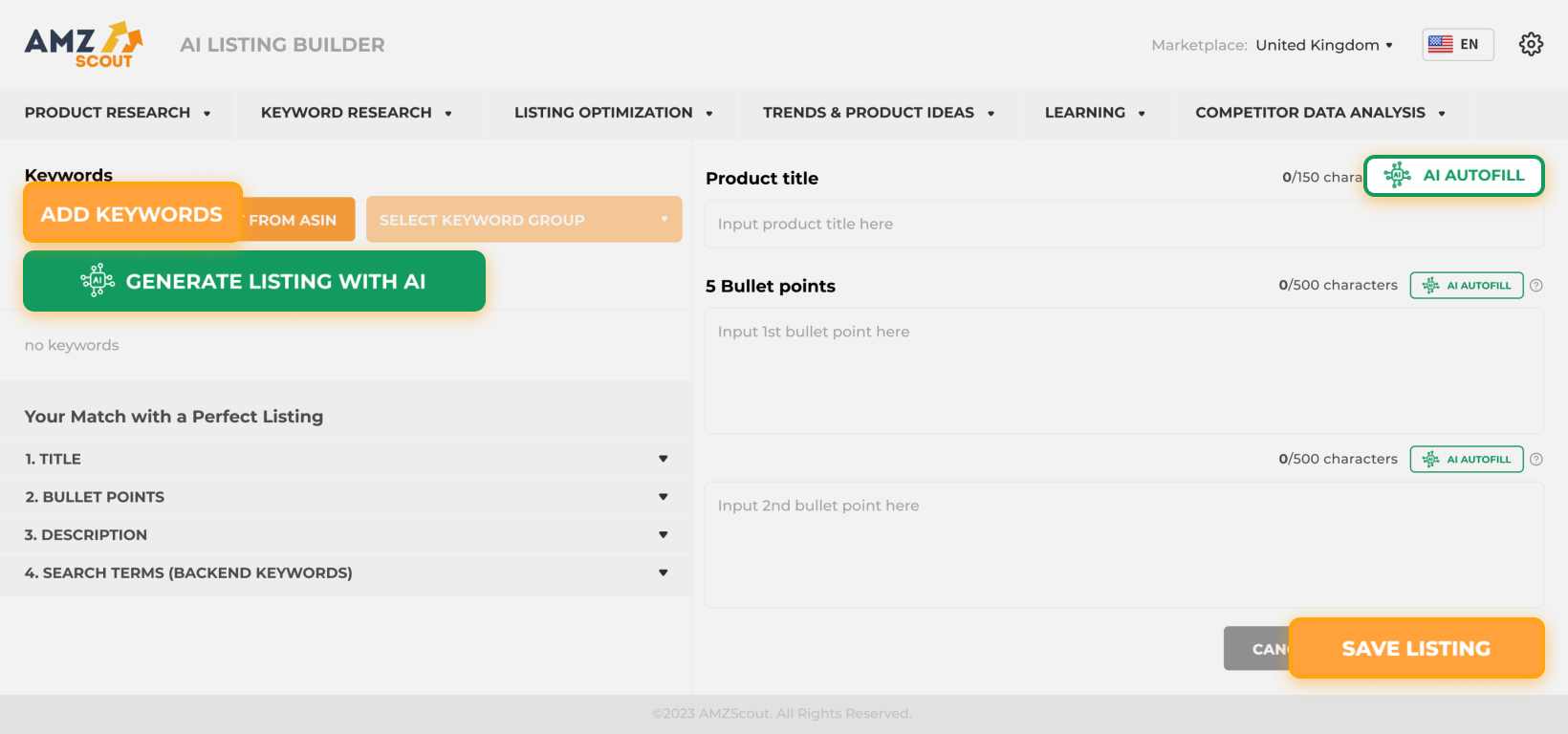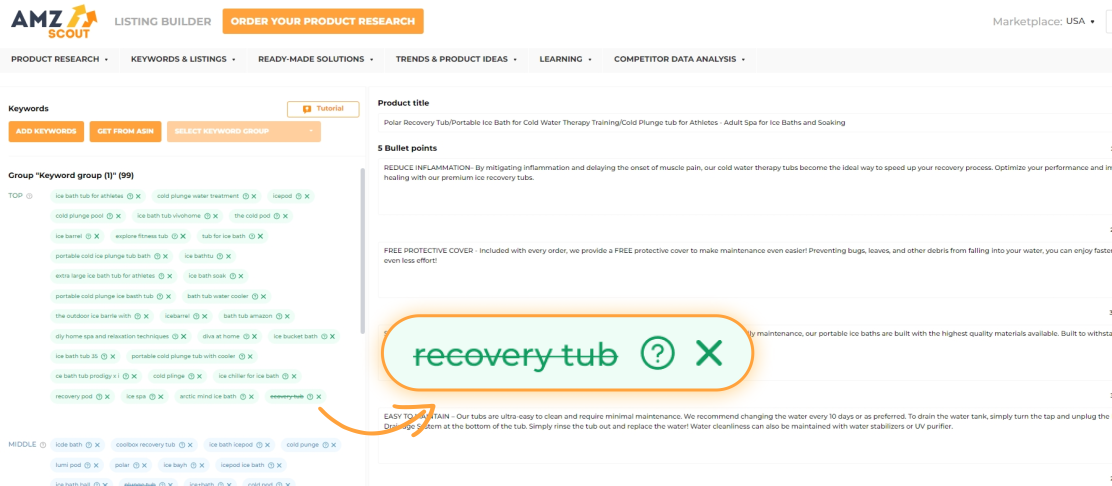
Amazon Rufus AI and the Future of Product Discovery for Sellers
Imagine a world where your Amazon customers don’t just search - they chat their way to the perfect product. Enter Amazon Rufus, the retail giant’s new AI shopping assistant that’s transforming the way people browse, buy, and interact with your store. Built directly into the Amazon interface, this intelligent chatbot helps shoppers find what they need faster, with personalized recommendations, real-time insights, and product reviews at their fingertips.
But what does Amazon Rufus AI assistant mean for your business? In this guide, we’ll break down what Rufus is, why it matters for sellers, and how to fine-tune your product listings for better visibility in the Amazon search bar. If you're serious about listing optimization, it's time to speak Rufus's language.
Table of contents
What is Amazon Rufus AI?
Rufus is Amazon’s next-generation AI shopping assistant, integrated into Amazon’s shopping platform (app and desktop). It's designed to make shopping faster, smarter, and more intuitive across both desktop and mobile.
Now available to all users in the U.S., Rufus is still labeled “beta” as Amazon continues to refine it. In Europe, it's in beta across countries like Germany, France, Italy, and Spain.
Key Features of Rufus AI:
Conversational Shopping: The tool works like a smart chatbot: users can ask full questions instead of keywords (e.g., “What are the best running shoes for beginners?”), and Rufus replies with personalized, review-based recommendations.
Advanced AI & Machine Learning: Rufus is trained on massive amounts of product data, customer behavior, and reviews to deliver relevant, tailored suggestions.
Natural Language Understanding: The AI assistant interprets user intent and complex queries to provide smart comparisons, category guides, and curated shopping options.
Integrated in the Amazon Search Bar: Transforms the Amazon search experience into an interactive conversation that helps customers move from discovery to purchase quickly.
Seller Impact: The better your product listings match what Rufus understands and prioritizes, the more likely your items will appear in its suggestions, making Rufus key to staying competitive on Amazon.
Why Rufus AI Matters for Amazon Sellers
Rufus isn’t just another feature. It’s changing how customers find and choose products on Amazon. It favors relevance, clarity, and content quality over big budgets, giving smaller sellers a real shot at visibility.
What Sellers Need to Know:
Intent-Driven Discovery: Rufus answers detailed customer questions, so recommended products are closely aligned with what shoppers truly want.
Quality Over Size: Well-optimized listings with clear descriptions, strong keywords, and solid reviews are more likely to be surfaced, regardless of brand size.
AI-Focused Listing Optimization: Rufus relies on natural language and structured data. Hence, keyword-stuffing or vague content won’t work anymore.
Reputation Matters: The assistant pulls from reviews, metadata, and listing content, so weak copy or poor ratings can hurt your visibility.
Strategy Shift Required: Sellers must now write listings not just for humans, but also in a way Rufus can “understand”. This means that clear, credible, and structured content is key.
Bottom line: Rufus is reshaping the marketplace. Sellers who adapt early stand to gain the most.
How to Optimize Your Listings for Rufus AI
If you want Amazon Rufus to highlight your product when customers ask for recommendations, your listing needs to be more than just “good”. It needs to be strategically optimized. Rufus doesn’t just scan for basic keywords; it interprets meaning, intent, and content structure. That means your product listing must speak fluently in the language of both your target audience and Amazon’s evolving AI systems.
Here's how to make that happen:
Tip 1. Find the Right Keywords
Keywords have always been the backbone of successful selling on Amazon, helping products surface in search results and reach the right customers. Both front-end (what shoppers see) and back-end (what the algorithm sees) keywords play a critical role in discoverability.
But with the introduction of Amazon Rufus AI, the game is shifting. This new AI-powered assistant understands natural language and intent, which means sellers need to be even more strategic, thinking beyond basic keywords to include conversational phrases and question-based terms. One of the easiest ways to find these high-performing search terms is with the AMZScout Reverse ASIN Lookup tool. Here’s how:
Enter the ASIN (Amazon Standard Identification Number) of a competitor’s product and click “Find Keywords.”
The tool will instantly pull a list of search terms and backend keywords that product is ranking for.
Review the list carefully. Focus on keywords that reflect high buyer intent (like “best noise-canceling earbuds under $100”) and mirror how real customers phrase their searches. Look for long-tail keywords, pain points, use cases, and comparison terms, as these help Rufus understand your product's relevance.
Save the strongest keywords to use in your listing’s title, bullet points, and backend fields.
By reverse-engineering the top listings, you’re not guessing what works, you’re borrowing proven, data-backed language that Rufus already understands.
Tip 2. Write Clear, Detailed Product Descriptions
Once you have your keywords, it’s time to craft content that clicks with both people and AI. Rufus favors listings that answer questions before they’re asked. So, it’s a good idea to use your bullet points to highlight benefits, not just features.
Instead of saying “500ml glass bottle,” say “Stay hydrated all day with a lightweight, leak-proof 500ml glass bottle—perfect for travel, gym, or work.” Be specific. Anticipate what shoppers want to know, and bake those answers directly into your descriptions.
Tip 3. Generate a Winning Listing with AMZScout’s AI Listing Builder
A winning Amazon listing today needs to do more than include top keywords. It must speak the language of the shopper. With Rufus AI interpreting natural questions like “What’s the best blender for smoothies?”, listings that answer those questions clearly and conversationally have a better chance of being surfaced.
Strong titles, bullet points, and descriptions that combine SEO with natural phrasing are now key to staying visible and competitive. The AMZScout AI Listing Builder makes it simple to build a high-quality, Rufus-ready listing in minutes. Here’s how:
Add your keywords. You can paste them in manually or import them by entering a competitor’s ASIN, fast and easy.
Click “AI Autofill.” The tool will generate titles, bullet points, and product descriptions that fit Amazon’s character limits and keyword standards.
Review the text. Make small edits to better match your tone, brand voice, and target audience.
Use the checklist in the bottom-left corner to ensure your listing follows Amazon’s best practices.
Save your optimized listing.
This tool helps eliminate guesswork and saves time while ensuring your content is both human-friendly and AI-


Tip 4. Don’t Forget Visuals and A+ Content
Text gets you into the search results, but images close the deal. Make sure your product photos are crisp, professional, and highlight key features. Include lifestyle shots that show the product in use. If you're brand-registered, take advantage of A+ Content to tell a richer story with comparison charts, graphics, and enhanced visuals. Rufus takes this visual content into account when evaluating a product’s relevance, so polished presentation can make all the difference.
In this new AI-powered shopping world, every detail matters. By investing in the right tools, content, and strategy, your product won’t just show up; it will stand out in the world of Amazon Rufus AI.
Tip 5: Don’t Ignore Customer Reviews
Customer reviews aren’t just valuable for shoppers—they’re essential fuel for AI tools and smart product recommendations. Savvy sellers know that reviews are a goldmine of insights. Don’t just glance at the star ratings; take the time to read, respond, and adapt your product or listing based on real feedback. Spotting trends often means digging through dozens or even hundreds of reviews, which can be time-consuming and overwhelming.
That’s where AMZScout’s AI Review Analyzer comes in handy: simply enter a product’s ASIN, and it will instantly surface key themes, common complaints, and standout features.
By acting on this data, you can fine-tune your offering to better meet customer needs. The result? Higher satisfaction, more positive reviews, stronger credibility, and ultimately, increased sales.
Final Thoughts
The rise of Amazon Rufus AI marks the beginning of a new era in e-commerce, where conversations replace keywords, and the search bar becomes a shopping assistant. For sellers, this shift isn’t just exciting; it’s a golden opportunity to get ahead of the curve. Those who embrace Rufus, adapt their strategies, and create listings that speak clearly to both AI and human shoppers will have the edge.
Tools like AMZScout make that transformation not only possible, but surprisingly easy, offering data-driven insights, keyword research, and AI-powered listing creation all in one place. As shopping gets smarter, so should your strategy. Rufus is listening, so make sure your listings have something worth saying.
FAQs
How to get access to Amazon Rufus?
Amazon Rufus is gradually rolling out in the U.S., built directly into the Amazon app, with no separate download needed. If you don’t see the chat icon yet, hang tight—it’s coming soon as Amazon continues to expand access and refine the experience.
In which countries is Amazon Rufus available?
Amazon Rufus is already live in beta across multiple markets—including the U.S., U.K., India, Germany, France, Italy, and Spain—offering shoppers a conversational AI experience within the Amazon app and website.
How will Amazon Rufus AI impact paid ads?
Amazon Rufus AI is shifting the focus of paid ads from simple keyword matching to relevance, review quality, and how well listings align with shopper intent. Sponsored products will still appear, but success will depend more on how optimized and helpful your content is. To stay competitive, ensure your listings are tuned for both search and Rufus’s natural-language understanding.
How to turn off Rufus on Amazon?
There’s currently no official way to turn off Amazon Rufus, as it’s built into the search experience. However, using an ad blocker may help hide the pop-up window. For sellers, it's still important to optimize for Rufus since your customers are likely interacting with it, even if you aren't.









